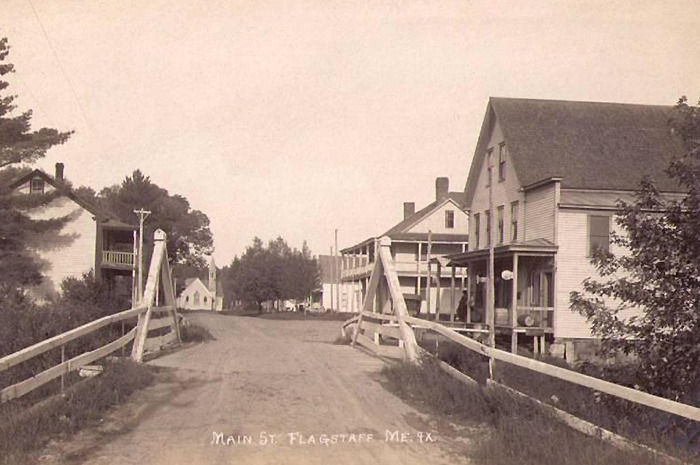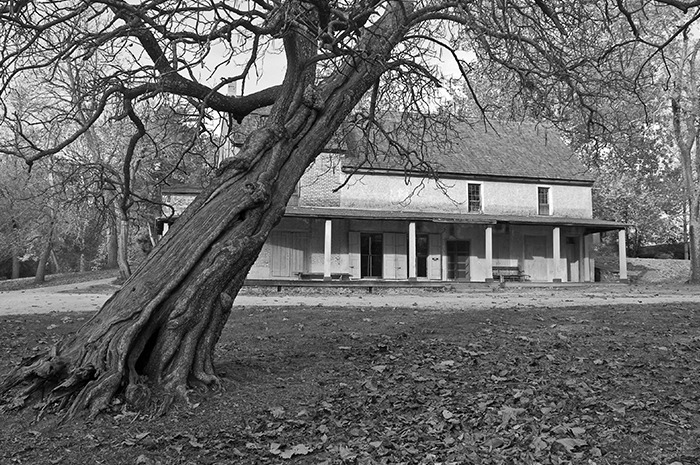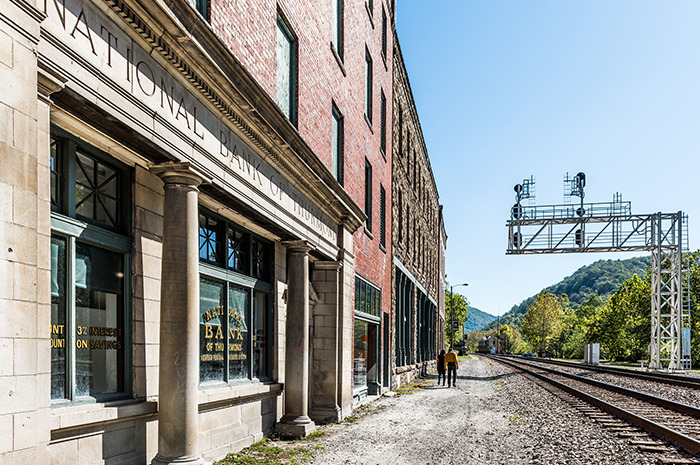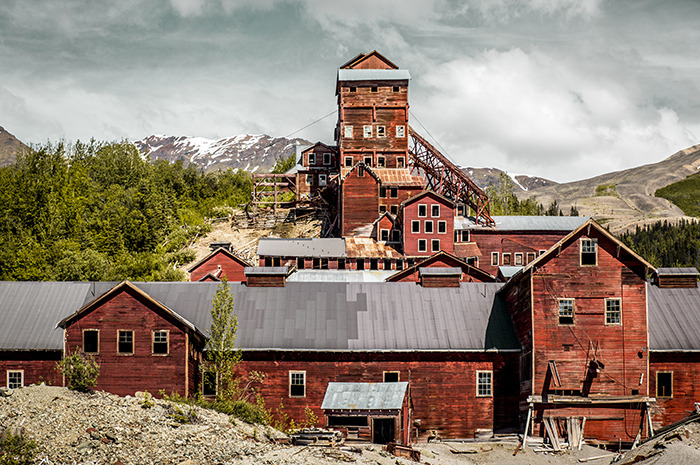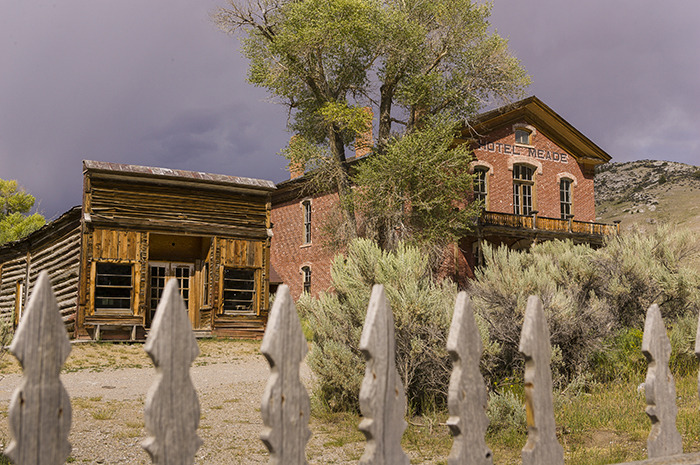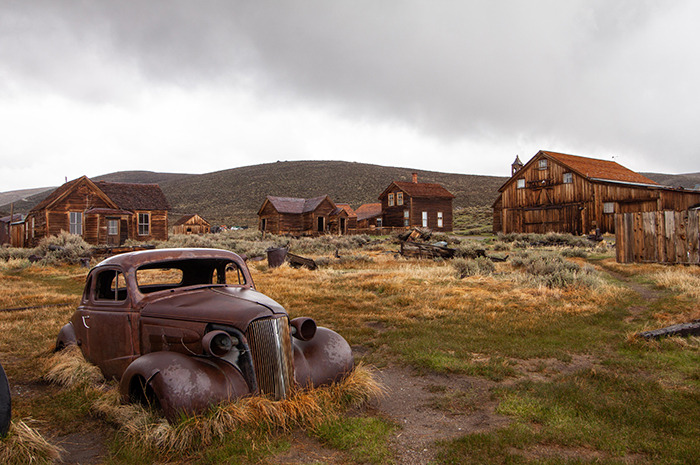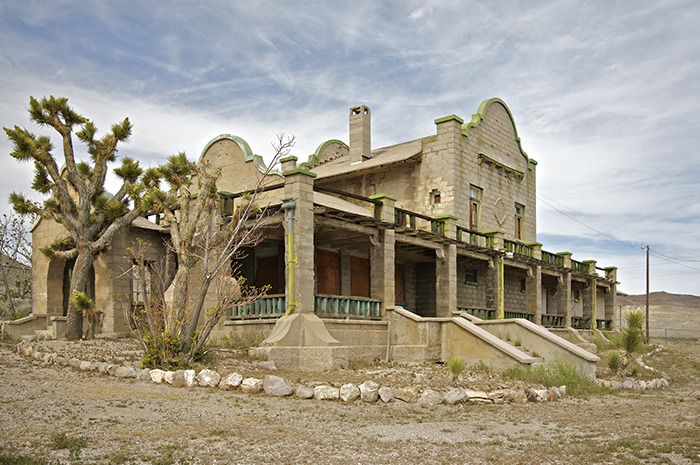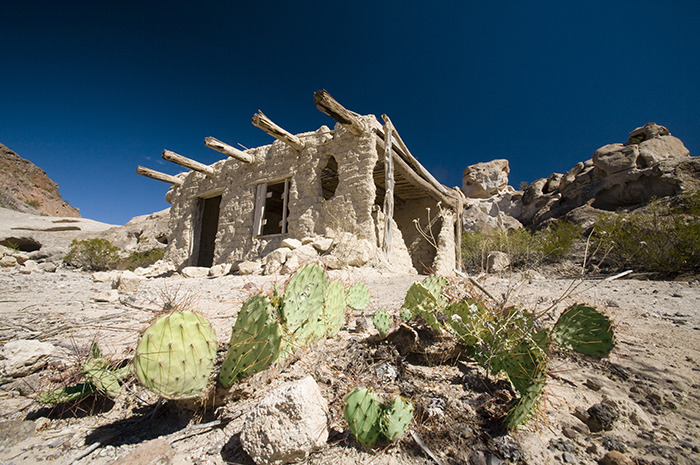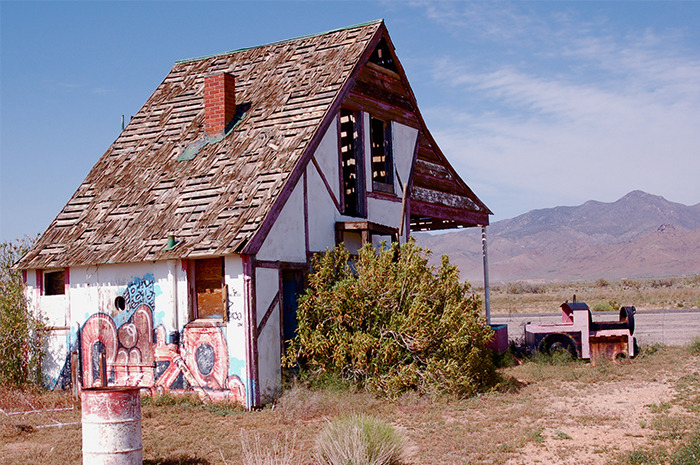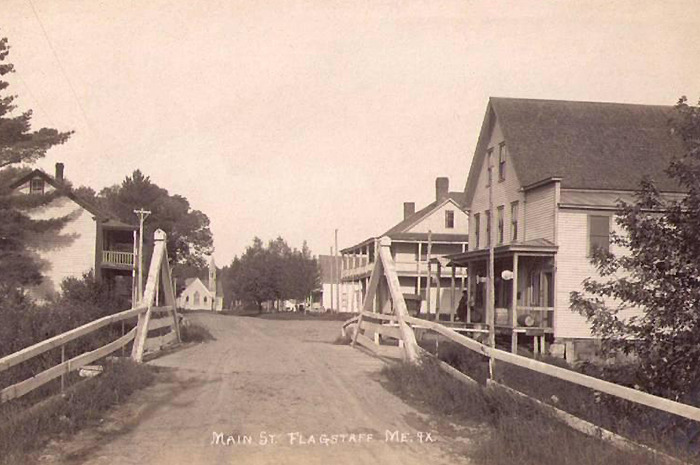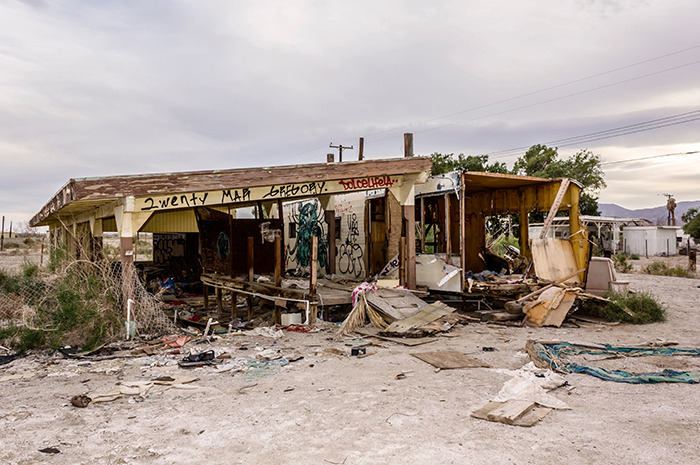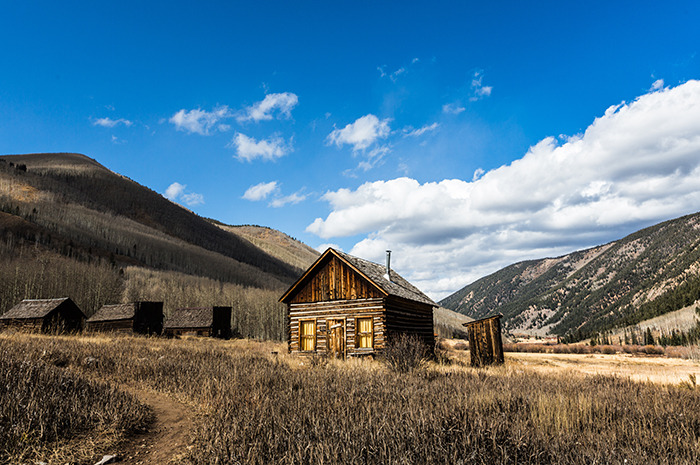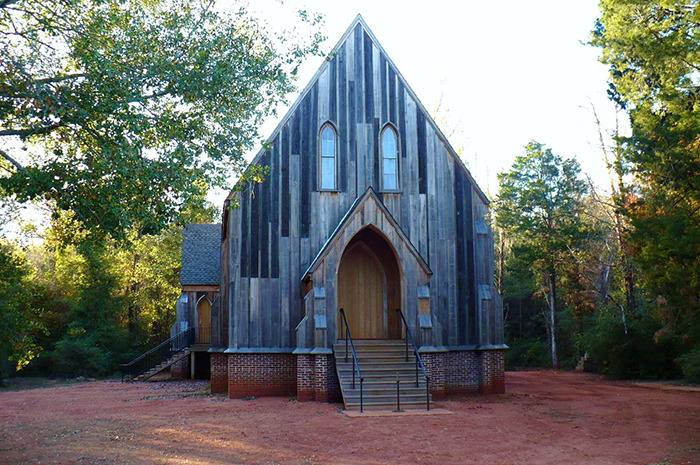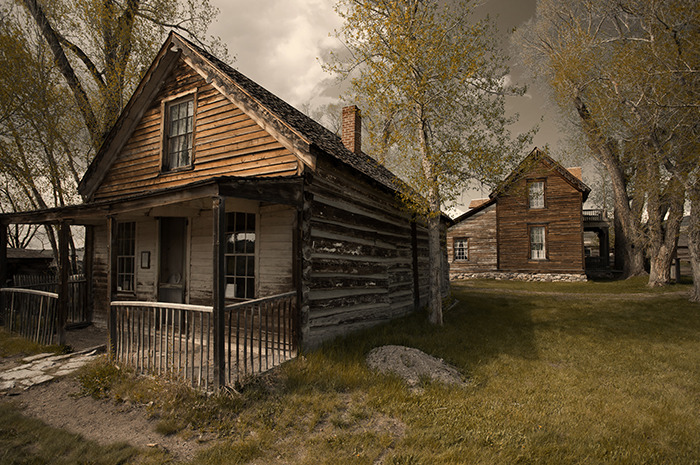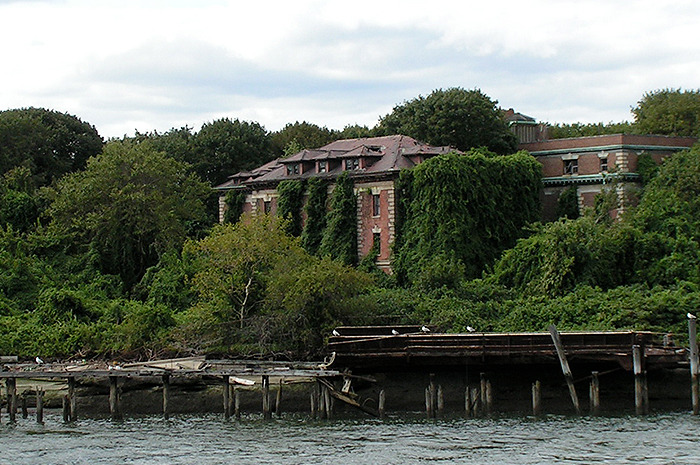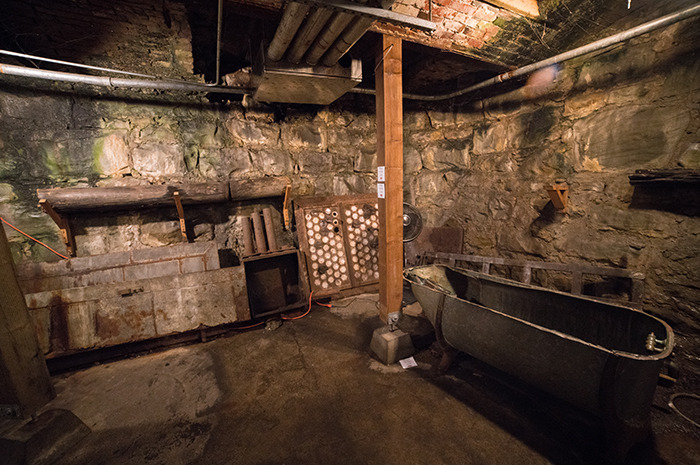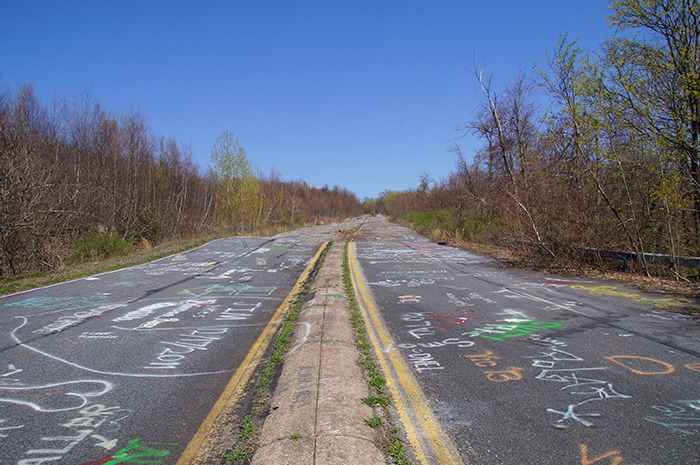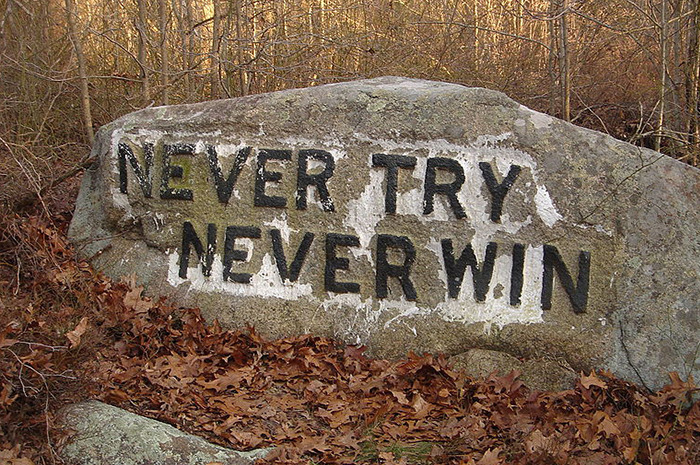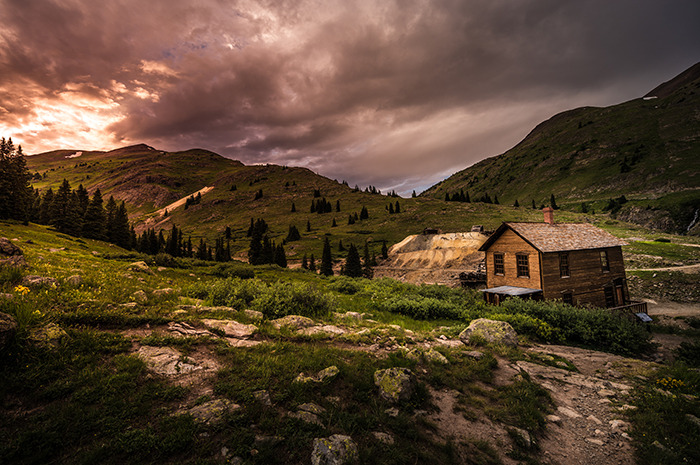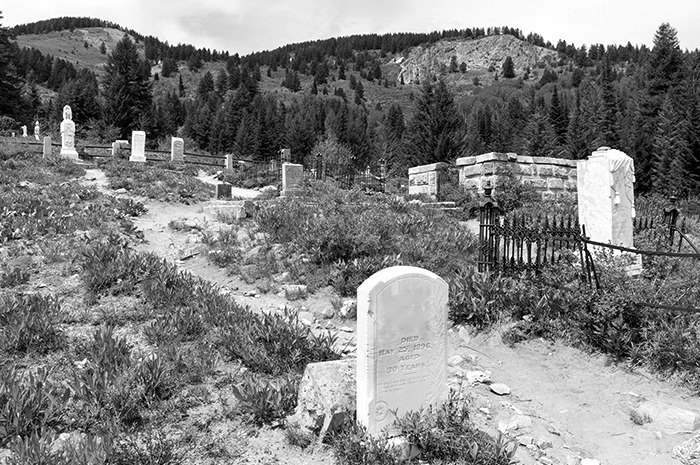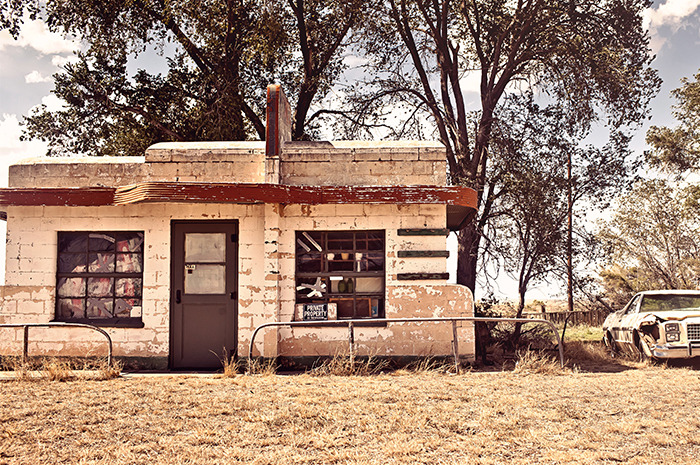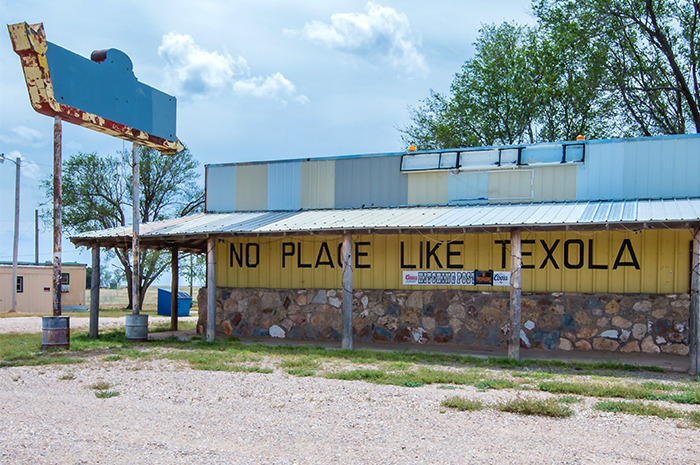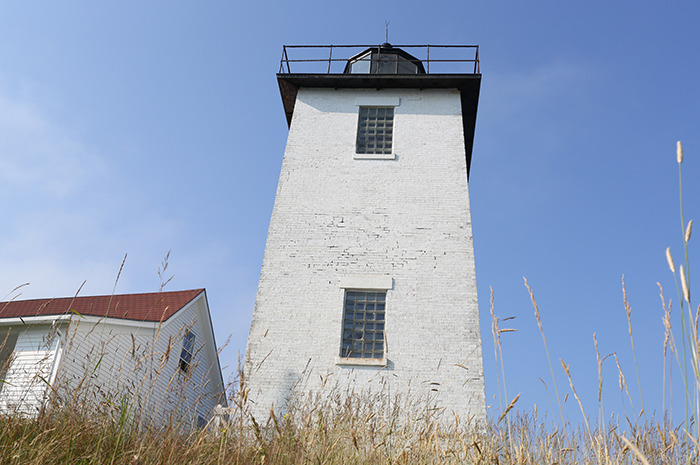25 Ghost Towns Around The U.S. And The History Behind Them
Of all the historic sites to see and tourist attractions to visit in America, ghost towns may be the most enthralling. They are a haunting — and sometimes haunted — reminder of a past nearly forgotten. While many ghost towns came to be after the Gold Rush ended and mining camps were abandoned, others were forced to dissipate as larger cities sprang up nearby.
During the 19th-century hundreds of small towns were quickly formed around lucrative mining sites across the country, but particularly in the west. When the mines were tapped out or local companies went bankrupt during the First or Second World War, the residents of these towns left to find opportunity elsewhere. This narrative is true to many, but there are a substantial number of ghost towns in America that came before the Gold Rush or years later. Towns that became abandoned islands, like North Brother Island in New York, and towns that became obsolete once highways were built that bypassed them, like Glenrio on the border of Texas and New Mexico.
Over the years, these neglected towns have disappeared into dense forests while others have been well preserved by neighboring communities. However, some of the most interesting towns may be the ones still home to a handful of stragglers, the ones that were given a second chance in the early 1900s, or the one now completely submerged underwater.
Pine Barrens, New Jersey
Stretching more than seven counties in New Jersey and spanning over one million acres, Pine Barrens is home to several ghost towns. What was once a thriving industrial hub during the Colonial period is now a heavily forested, abandoned land most known for its countless hiking trails and the legendary Jersey Devil. The Jersey Devil, as legend has it, was a resident of the area born to the mother Jane Leeds who already had twelve children. In 1735, this creature became the thirteenth child, born with hooves, leathery wings, a goat's head, and a forked tail. It flew up the chimney and into the pines, where the legend claims the creature has been killing livestock since.
Thurmond, West Virginia
Thurmond was once a prosperous train town due to its location along the Chesapeake and Ohio railroad lines during the heyday of coal mining in the New River Gorge. The infamous Dun Glen Hotel reportedly hosted the world's longest-lasting poker game, which lasted 14 years, according to Ripley's Believe It or Not. However, the hotel burned down in 1930 and this disaster marked the town's eventual decline. Today, it's a ghost town — in more ways than one, as reports abound that the few remaining structures are haunted.
Kennecott, Alaska
This area of Alaska, also known as Kennicott, was once at the center of several copper mines. During that time the Kennecott Copper Corporation produced over 200-million dollars' worth of ore. It was one of the world's largest minerals companies until the price of copper dropped during the Great Depression. The ore deposits were running out, and in 1929 the first mine closed down. By 1938 all mines were closed and the railroad was shut down. Today, the abandoned mill town is a National Historic Landmark run by the Park Service.
St. Elmo, Colorado
Now one of Colorado's best preserved ghost towns, St. Elmo was once a booming mining town for gold and silver in the Sawatch Range. Founded in 1880, the town was at its peak during the 1890s when it boasted a general store, a telegraph office, several hotels, a town hall, a newspaper office, and a school. In the early 1920s, the mining industry was in decline and when the railroad was abandoned in 1922 the mining companies that were left shut down, and residents fled elsewhere for opportunity. In 1952, after the death of St. Elmo's postmaster, the postal service in the town ended as well. While many of the buildings are still intact, several burned down during a fire in 2002 including the town hall. The nearby Buena Vista Heritage is working to rebuild the structure to its original state.
Bannack, Montana
Bannack, Montana was once home to a significant gold deposit discovery, made in July of 1862. The town's population grew to over 3,000 in less than a year and even became Montana's first territorial capital in 1964. At its peak the community was home to nearly 10,000 people, but as gold ran out the town slowly dwindled until the last residents left in the 1970s. Now, the abandoned town hosts a historical re-enactment each year, during the third weekend of July, known as "Bannack Days." Over the two days visitors can catch a glimpse of what the town was like during the Gold Rush. There are also Bannack Ghost Walks held on the Friday and Saturday before Halloween where visitors can take a spooky tour of the ghost town by way of flashlight.
Bodie, California
This mining town was unlike any others of its time. Bodie, California earned a reputation as the "most lawless" mining camp due to its high levels of violence, robbers, brothels, gambling halls, and opium dens. At its peak, Main Street was lined with 65 saloons and "houses of ill repute." It began as a small town of about 20 miners in 1861 and grew to about 10,000 by 1880. The town's official decline began in the 1900s. By 1910 the recorded population was 698 and the last newspaper was printed in 1912. Most of the town was burned down in 1932 after a massive fire swept through, but 200 buildings still remain in a state of "arrested decay." Visitors are not allowed within the buildings, but can take a tour of the old stamp mill.
Rhyolite, Nevada
In the Bullfrog Hills of Nevada, the now ghost town of Rhyolite was once a booming area with a stock exchange, several newspapers, hotels, two electric plants, public swimming pools, and two railroad depots. Although the town had a population of nearly zero by 1920, it is most known for one incredibly unique building that can be visited today — the Kelly Bottle House. Built in 1906, it was made from 50,000 discarded beer and liquor bottles thrown away by the saloons.
Terlingua, Texas
Terlingua, Texas was a thriving cinnabar mining area that became most popular in 1888. By the 1900s there were four mining companies in the area, and cinnabar production peaked during the First World War However, by the end of the Second World War miners began to leave after the main Chisos Mining Company went bankrupt. This once abandoned mining village is now a quaint desert community of 58, according to the 2010 census. Located near the Rio Grande, you can still find decaying buildings, ruins, and mine shafts from the glory days of its past. Those who live there now are mostly artists who have chosen to live without water or electricity, for the most part.
Santa Claus, Arizona
Along U.S. Route 93 Santa Claus, Arizona was known for its Christmas-themed attractions like the Santa Claus Inn. The area originated in the late 1930s, and was owned by a woman that some say created this as a marketing stunt to attract buyers. The desert town even had a place where visitors could meet St. Nick, or get Santa Claus postage from the post office. Over the years, interest in the town declined, until it was abandoned in 1995. Now, the only things that remain of this forgotten land are a few vandalized buildings, an unkept pink children's train called "Old 1225," and a wishing well.
Flagstaff, Maine
This ghost town is named after a flagstaff that was planted here by Benedict Arnold and his troops in the early 1800s. However, in 1950 the town was abandoned in order for a hydroelectric dam to be made. This meant the entire town would be submerged underwater, creating what is now Lake Flagstaff. Occasionally people can see signs of the lost town when things like chimneys peek out from the water's surface.
Salton Riviera, California
The once bustling resort beach town of Salton Riviera is now an abandoned wasteland on the West Coast. Located only a few miles outside of Los Angeles, the area used to 250 miles of road and 25,000 residential lots. However, little local employment opportunity was available for the number of residents it hosted and the community was officially abandoned once sea levels rose along with the increased pollution and salinity levels of the Salton Sea in the 1980s and 1990s.
Ashcroft, Colorado
Ashcroft, Colorado began as a mining town like any other in 1880. As was the case with most mining towns, once the silver ran out and there was nothing left to mine most residents left, leaving only 100 people by 1885. However, the town caught a second wind of hope in the 1930s when the Winter Olympics brought interest back to the area and Billy Fiske (the captain of America's Olympic bobsled team which had recently won a gold medal) built the Highland-Bavarian Lodge nearby. The lodge was intended to expand into a massive ski resort, but when Friske was killed in combat during World War II the plan came to a standstill. It's been a ghost town since 1939.
Cahawba, Alabama
Cahawba, Alabama was the first state capital from 1820 through 1825. However, due to seasonal flooding in the town caused by the two large rivers it sat between, many residents left and the state legislature decided to move the capital in 1826. The town became a center for cotton trade and during the Civil War was home to Castle Morgan prison, where Union soldiers were kept as prisoners of war between 1863 and 1865. At that point, a major flood engulfed the town and the residents fled once again, taking their businesses with them. By 1903 most building were gone and barely anything remained after the 1930s, only a few deteriorating structures that now seem fit for a horror movie.
Virginia City, Montana
Founded in 1863, Virginia City was originally infamous for a lacking law enforcement or a justice system, much like their neighboring town of Bannack. Consequently, this led to a high rate of robberies and murders in the area. Between the years 1863 and 1864 alone, outlaws (or road agents as they were called) were responsible for about 100 deaths. In early 1865, the territorial legislature moved the capital from Bannack to Virginia City for a brief period. The town became home to Montana's first public school in 1866, but over time became a ghost town. Now the structures have been restored for tourism and Virginia City was made a National Historic Landmark in 1961.
Elk Falls, Kansas
Known as the "world's largest living ghost town," Elk Falls is still home to 107 people, according to the 2010 census. The town was always small, but at one point had a school that over 200 students attended. During its peak there were two stores, a dentist, a doctor's office, and a drug store. However, due to political upheaval in the 1870s, the population declined, with only 269 residents by 1927. Now Elk Falls is also known as the Outhouse Capital of the World, which has attracted many tourists over the years for their Outhouse Tours.
North Brother Island, New York
Until September 11, 2001 North Brother Island was home to the state's deadliest disaster. Located between the South Bronx and Rikers Island, the small island was uninhabited until 1885 when the Riverside Hospital was built there. This hospital became a way to quarantine those with contagious diseases, even treating "Typhoid Mary" Mallon, who was the first asymptomatic carrier of the typhoid fever bacteria. Then, in 1904, the General Slocum boat caught fire near the island which killed more than 1,000 people, mostly people from the Lower East Side community. This was the largest loss of life for New York until the 2001 attacks. In 1946, the island became housing for soldiers returning from war, but it was reopened as a hospital after World War II. North Brother Island was abandoned in 1963 and has been run by the New York City Department of Parks and Recreation since, but no visitors are allowed on the island.
Seattle Underground, Washington
This underground world below Seattle's Pioneer Square once sat on the ground level when the city was first built. After the Great Seattle Fire destroyed 31 blocks of the city in 1889, it was decided that buildings would no longer be made of wood (as they were prior) but instead out of stone or brick, and the city streets would have to be built two stories higher than they were at the time. The area which is now known as Seattle Underground was subject to floods, but with the newly elevated streets, the old town was buried and forgotten to make way for the new stone/brick city. In the early 1900s, the Underground was condemned by the city, but over the years was used as opium dens, gambling halls, speakeasies, and the homeless. Now, some of it has been restored which has allowed for guided tours that are accessible to the public.
Centralia, Pennsylvania
A coal seam fire began burning under the borough of Centralia on May 27, 1962, resulting in the town's slow abandonment over the past 50 years. The fire, which is 300 feet underground, originally began during a routine attempt to clean up a town landfill that was located in an abandoned strip-mine pit, which happened to be connected to a myriad of coal-filled, underground mining tunnels. Firefighters set the dump on fire, as they had always done in years previous, but this time the fire was not fully put out. Other legends persist that a coal fire from 1932 was never fully extinguished, and had just finally reached the landfill in 1962. Over the years, multiple excavation projects to discover the perimeter and depth of the fire, as well as plans to flush the fire, either failed or were abandoned. In 1992, all real estate was condemned by the Commonwealth of Pennsylvania and claimed under eminent domain. Officials have allowed the few remaining residents to continue living in their homes, but when they either pass away or decide to move, the rights to their houses will be taken by the state. Scientists believe the fire could continue to burn underground for 250 more years.
Dogtown, Massachusetts
First settled in 1693, the town is said to have gotten its name during the American Revolution when women kept dogs to protect them while their husbands were out fighting. At its height, Dogtown was home to an estimate of 60 to 80 homes, with nearly 100 families by the mid-1700s. The growth of the fishing industry in the neighboring town of Gloucester eventually led to the demise of Dogtown. Toward its end the town was said to be home to residents practicing witchcraft, and the last building was demolished in 1845. However, during the Great Depression, millionaire Roger Babson hired people to carve inspirational messages into boulders throughout the densely forested area, which people can hike through and see to this day.
Animas Forks, Colorado
At 11,200-feet above sea level, this mining camp is one of the highest in the West. Being at such a high elevation, the town's residents would flock south to Silverton in the fall for the impending winter. A 23-day blizzard in 1884 inundated the town with 25 feet of snow, leaving residents to create a system of tunnels to maneuver between buildings. When mining was on a downswing in the 1890s, many moved away. In 1904 the Gold Prince Mill gave mining in the area a second chance, but when the mill closed in 1910 the town was soon after abandoned. Only 10 buildings still stand.
Batsto Village, New Jersey
Within the Wharton State Forest is the site of Batsto Village. From 1766 until 1867 this town was the center for bog iron and glassmaking, and created the supplies for the Continental Army during the American Revolutionary War. As the story goes for most ghost towns, Batsto Village faced population decline and bankruptcy when demand for iron lessened. Although the town was mostly abandoned, few residents still lived there until the last person left in 1989. Since New Jersey purchased the land 1958, they've restored much of the historic village and have opened it up to visitors.
Silver City, Idaho
This old mining town was not particularly unique to others of its time, but is unique in its immaculate preservation. There are 75 structures making up the area that date back from the 1860s into the 1900s. At its height, the mining town was home to 12 ore processing mills and about 2,500 people. There were upwards of 250 operating mines between 1863 and 1865. Now, Silver City has one of the country's largest open-pit gold and silver mines, and several small business — including the century-old Idaho Hotel, which has only received the addition of few modern amenities, but otherwise looks as it did 100 years ago.
Glenrio, Texas/New Mexico
During the heyday of the legendary Route 66, Glenrio was a bustling road stop between Texas and New Mexico. Perfectly straddling the two states, the town was able to build their gas station in Texas, where taxes were lower, and its bars in New Mexico, where alcohol sales were legal. In 1939, The Grapes of Wrath crew even filmed in the area. However, when I-40 was built passing Glenrio the town became mostly desolate. It is now part of the National Register of Historic Places.
Texola, Oklahoma
This farming town in Oklahoma began around 1901 near Route 66 and the 100th Meridian. Due to its location, there was much confusion at the time as to whether the town was part of Texas or Oklahoma. By 1909 the town had a corn and grist mill, two cotton gins, a post office, and a weekly newspaper. In 1910 there were 361 residents, but peaked in 1930 with a population of 581. However, with the creation of I-40 and the soil erosion in the area now known as the Dust Bowl, population began to decline. As of the 2010 census only 36 people still lived in the town.
Swan Island, Maine
Off the coast of Maine, Swan Island can only be accessed by ferry, kayak, or canoe. The island was originally inhabited by Native Americans, but in the early 1700s European settlers came in and developed a town. The remote island was most known for fishing in the 1930, and its main occupation is now lobstering. In the 1940s, Maine began acquiring bits of land until the state fully owned it. Now, it is a popular summer destination but there are still five homes standing from the 1700s that visitors can peek into for a glimpse of the past.
